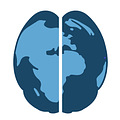Over this summer, I took the opportunity to participate in the International Youth Neuroscience Association’s (IYNA) summer program. The program lasted about 1 month, throughout July. I had a great time learning and connecting with people, and definitely would recommend the program to other high school students passionate about neuroscience.
The program is separated into 2 divisions; the neuroscience 1 tract (intended for less advanced students), and the Neuroscience 2 tract (intended for advanced students or those who previously took Neuro 1). These categories are further split into the participant tract (for those who only intended to earn participation credit and attend lectures) and the certificate tract (a more intensive experience along with homework, group meetings, and a Capstone project). For the summer program, I was in the Neuroscience 1, certificate tract. This meant that I had to attend lectures like everyone else, but also take part in group recitation sessions with my designated teaching assistant and assigned group members. Additionally, I needed to complete daily homework assignments that correspond to previous lectures, as well as complete the final Capstone project in order to earn my certificate. Because this program is available to high school students globally, the courses are tailored towards meeting individual needs such as; availability, picking own recitation times, and choosing the ideal tract. Whichever track you choose, you’re sure to gain an amazing learning experience.
The Capstone project is worked on throughout the course. The organization creates a timeline for the project with each step assigned a deadline to ensure that every student stays on track. In Neuroscience 1, the goal of the project was to create a mock research grant proposal on an unanswered or unveiled topic in neuroscience. At first, this may seem hard to think of. But, that was the purpose of this project; to conduct thorough research. My research grant proposal revolved around the development and analysis of animal cell-free brain organoids for drug testing to study methods of treatment for neurodegenerative diseases. My research was derived from reading a lot of academic journals, reports on past experimentation, and analyzing the perspective of other scientists on this concept. I concluded that the growth and increased use of neural organoids will give rise to; more personalized patient treatment plans, improve understanding of neurophysiology, shorten drug developmental times, and widen drug exploration through the inducement of ancient medicine such as traditional Chinese medicine and ayurveda. Working on this project surely fueled my interest to continue learning about neuroscience.
Most importantly, attending regular meetings with my group, people from all over the world, really provided a broader perspective on just how many people hold an ambition towards learning. My teaching assistants were very supportive and helpful throughout the program and shared important insights from their experience with research and neuroscience. If you’re passionate about neuroscience and looking for a fun and constructive activity to do over the next summer, I’m sure the IYNA summer program will not disappoint.
Link to IYNA website: IYNA (youthneuro.org)
Written By Devika Chauhan from MEDILOQUY




This summer program sounds really interesting and educational. How did you get introduced to it and decide to join?